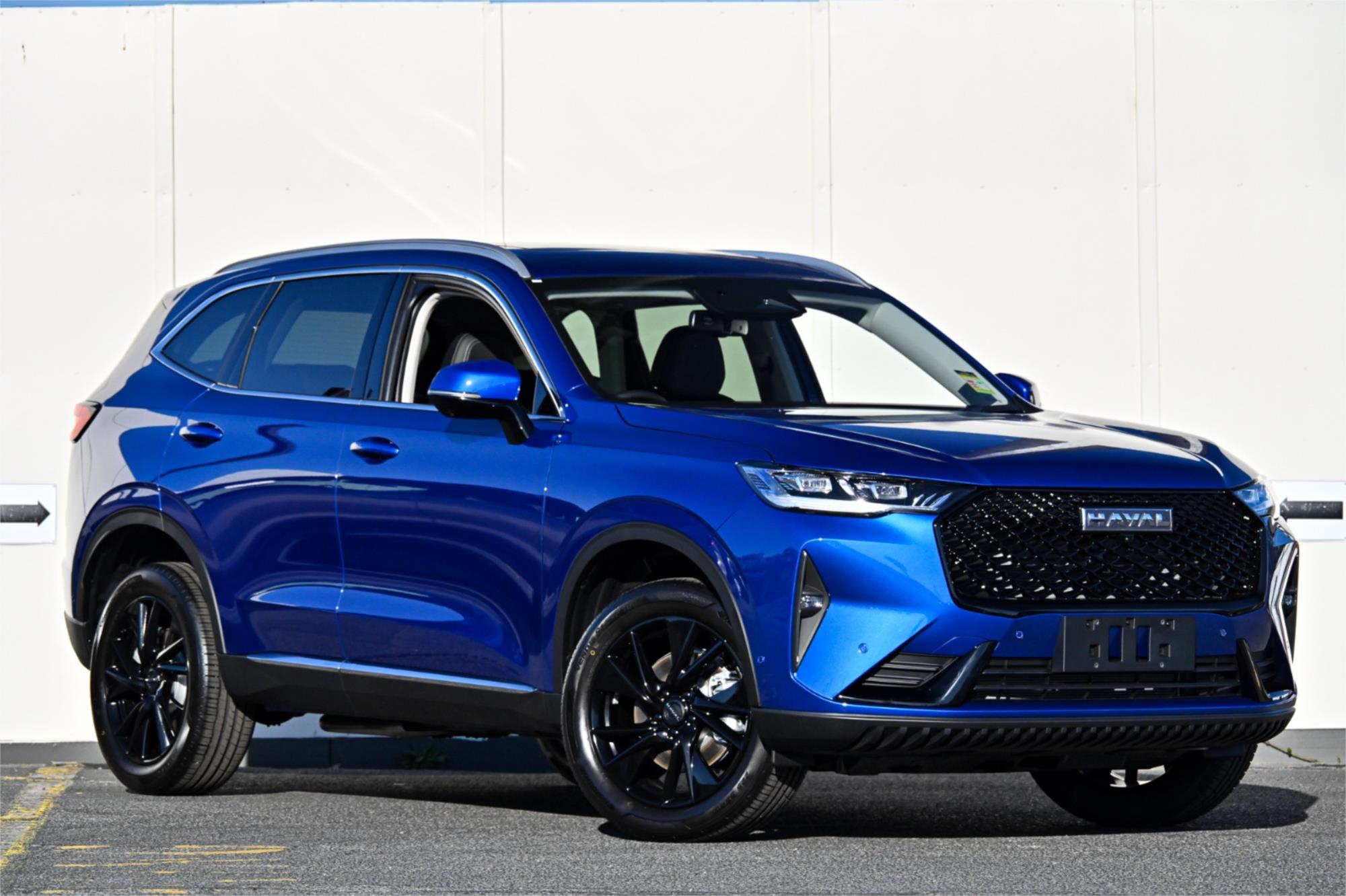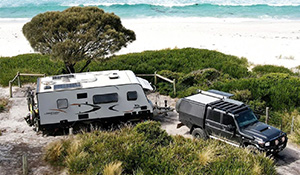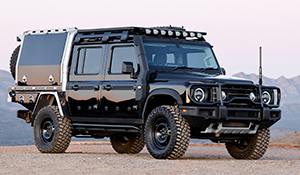FEATURE – Willys Jeep DJ-3A Gala
The Jeep Gala was one of those “happy accidents”; something never particularly planned by parent company Willys, but one that made an impression when new and lives on as an interesting sidebar in Jeep’s history.
The Kaiser Factor
After a somewhat rocky start to the 1950s, Willys-Overland seemed to be on a more solid footing by the time 1953 rolled around. 1951 had seen sales volume of their Jeep range double over the previous year and 1952 saw a further increase of 37 per cent, enough to make Willys-Overland America’s fifth largest vehicle maker that year.
New variants of the civilian Jeeps were selling well and the ‘Aero Willys’, the company’s first proper post-War passenger car, had also been released.
But, in April of 1953, Willys-Overland was purchased by Kaiser Motors (formerly known as Kaiser-Frazer Corporation); the first in a raft of mergers and acquisitions across the US auto market in the 1950s.
Kaiser’s boss, Henry Kaiser, had made a fortune in shipbuilding during World War II and decided he wanted to enter the car market after hostilities. He teamed up with Joe Frazer to create Kaiser-Frazer, which started big in 1947, offering both ‘Frazer’ and ‘Kaiser’ automobiles.

However, Henry Kaiser’s grand plans of taking on Ford, General Motors and Chrysler were overturned rather rapidly. Despite a sales spike in 1951 (when the last Frazer-badged cars were built), Kaiser-Frazer found they didn’t have the vehicles, the sales volume, the dealer network or a real “point of difference” to compete with the established automotive brands.
Kaiser Motors weren’t offering anything truly innovative, nor were they tapping into market segments not already covered by other carmakers. That’s what made Willys-Overland so appealing.
With the exception of a few conversions done by aftermarket companies on trucks and light commercials, Willys had the commercial and recreational four-wheel drive market virtually to itself after World War II with the Jeep; a situation that wouldn’t change until the International Scout arrived in 1961.

Holidays in the Sun
Kaiser’s purchase of Willys-Overland saw the company renamed ‘Willys Motors Inc.’, which would be changed again to ‘Kaiser Jeep Corporation’ a decade later.
Despite his hopes, purchasing Willys didn’t give Henry Kaiser the breathing room or capital he needed to keep Kaiser Motors afloat. The last Kaiser-badged cars were offered in 1955, with production of Willys passenger cars ending in the same year. From then on, Jeeps were the sole focus of the company.
A year later, Jeep re-introduced a new two-wheel model to their range. Two-wheel drive Jeep trucks had been dropped for the 1952 model year, but Willys found there was still a demand for smaller 2WD vehicles for postal and other light delivery work, so offered a two-wheel drive version of the CJ-3A Jeep, dubbed the DJ-3A (‘DJ’ ostensibly stood for ‘Delivery Jeep’), for 1956.

With the same 134.2ci L-head four-cylinder petrol engine as the CJ, the DJ-3A also featured a 3-speed manual transmission, leaf spring suspension and a choice of body styles, from open roadster to a closed-in ‘panel van’.
By this time, Henry Kaiser had moved on. Back in 1954, he had purchased the small Niumalu Hotel on Waikiki Beach, which he would expand into the much larger ‘Hawaiian Village’ resort. In 1955, he had “retired” from Kaiser and Willys to focus on his businesses in Hawaii.
A connection to Willys and Jeep remained, though, which saw Kaiser add a fleet of DJ-3As for use as rental vehicles by resort guests. These were painted in distinctive pastel colours, reflecting both the tropical location and the era.
With their unmistakable colours, the Hawaiian Village DJ-3As were standout vehicles, which saw their look and finish copied by other car rental agencies throughout the Hawaiian Islands.

Gala and Surrey
The popularity of these rental fleet Jeeps saw Willys Motors offer one as an official factory model from 1959. Initially, sales were to export markets only (which basically meant anywhere not within the continental US), but before the year was out, the model was available within the US as well.
Despite often being lumped together, the ‘Gala’ and ‘Surrey’ were two versions of the DJ-3A, even though they’re virtually identical. The Gala was the export model, while the Surrey was the domestic market version.
Both were unchanged mechanically from the DJ-3A, but it seems that a column-shift manual was standard (JUST 4x4s can find no evidence of the model ever being offered with a floor-shift).
Both the Gala and Surrey could be had in a choice of three bright colours: Cerulean Blue like the vehicle featured; Jade Tint Green; and Tropical Mist (pink). This was offset with Glacier White on the grille, front valance panel, windshield surround and undersides, although numerous examples of the Tropical Mist version - which proved to be the most popular colour - appear to have used a lighter pink in place of the white.
Other features included whitewall tyres and chrome hubcaps, chrome bumpers, chromed exterior mirrors and grab handles, white straps for the windshield, and the Surrey/Gala’s signature feature: the striped and fringed canvas top. Colour-matched to the paint, the treatment of the top extended to the front and rear seat upholstery, as well as the spare wheel cover.

In promoting the Surrey, Willys said it was “excitingly original, different and practical”. The fact it was a ‘recreational’ vehicle wasn’t in doubt, but understanding its appeal to fleet buyers in holiday areas, the “carefree business-pleasure” versatility of the model was also pushed.
Surrey sales appear to have been confined mainly to California and Florida, while the Gala spread beyond Hawaii to Mexico and various locations throughout the Caribbean and Central America.
As with the first units offered in Hawaii, most of the official factory versions that followed were purchased by hotels and resorts as courtesy vehicles, or by rental companies in holiday destinations.
These distinctive Jeeps also appeared in a number of Hollywood movies and TV shows throughout the 1960s, like The Nutty Professor, Ride The Wild Surf and Gomer Pyle U.S.M.C. They also appeared in a couple of Elvis films, while a Tropical Mist example, allegedly bought by Elvis himself, still resides in the car collection at Graceland today.
Both the Surrey and Gala were offered until 1964, when the DJ-3A Jeep was replaced with the DJ-5 and larger DJ-6.

Survivor
Like any rental or regular use vehicle, the Surrey and Gala Jeeps tended to get beaten up over time, so of the 1,000 or so originally produced by Willys, survivors today are few and most of those have been restored. Such was the case with the example featured, which went to auction through RM Sothebys’ Arizona sale in January.
The 1960 model Gala came to auction fresh from a thorough, frame-off restoration, which included a bare metal paint job, all-new striped vinyl seat trim, a new top, refurbished engine and fully-detailed engine bay, with only 45 miles on the odometer since work was completed.
Some Surrey/Gala purists have pointed out a few non-matching elements on the resto, like the webbing (instead of vinyl) windshield straps, bumpers from an earlier Willys Jeepster, and painted, not chromed, grab handles and mirrors.
Regardless of the criticisms from pedants, the Gala presented exceptionally well and given the rarity of these vehicles, was expected to sell for up to US$35,000, despite a No Reserve listing.
At the same auction where a restored 1970 FJ40 LandCruiser sold for a jaw-dropping US$46,750, the Jeep Gala sold for the same amount - US$46,750 (AU$58,180 approx.).
Given a similarly-restored Tropical Mist Surrey sold for “only” US$25,300 in 2013, the price achieved for this Gala is particularly impressive and shows that rare units like this from Jeep’s history are becoming increasingly collectable.
For further details from this auction, go to: <a href="www.rmsothebys.com">rmsothebys.com</a>
Words: Mike Ryan
Photos: Patrick Ernzen, courtesy of RM Sotheby’s










